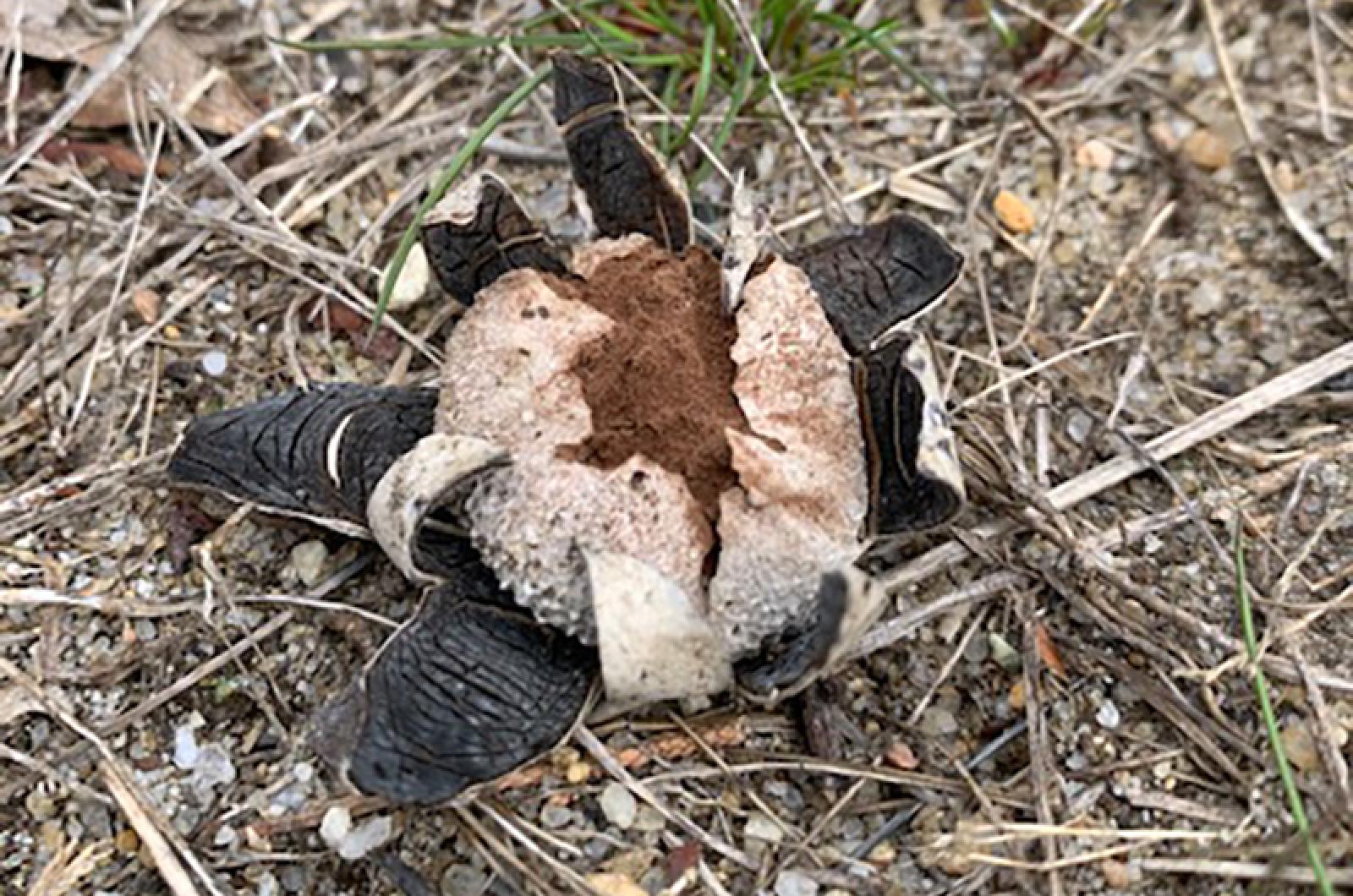Moving up in the world is an aspiration and for some, all absorbing.
Earth stars takes this ambition quite literally. In fact, this fungus is one of the few mushrooms that can actually move. You read that right — but don’t envision marching mushrooms. Their path is vertical, moving up for species survival.
Standing tall is an apt, though generous, description of this fungus, which is less than two inches wide. If you are perceptive, low to the ground, and have about five minutes (which is all the time it takes for them to open), you can almost see them increasing in stature once you know the physical and environmental mechanisms behind their escalation. Their alias, barometer earth star gives a hint: it is moisture and humidity that cause the uprising. Form and function help along the way.
The makeup of earth stars, which are related to puff ball mushrooms, include an onion-shaped bulb that is the fruiting body of the below-surface mycelium. A member of the Gasteromycetes, or “stomach” fungi, the bulb has three layers of peridium, or skin. When it rains, or becomes humid, earth stars glory in the wetness. Their peridium layers absorb water, and the top two layers split and uncurl, forming star-like rays around the remaining central spore sac.
The expanding rays open and push down, allowing the center spore sac to rise skyward above the surrounding vegetation. The continuing pelting rain can puncture the sac and release spores outward and upward, now that it towers over its neighboring flora. Once the rain and humidity decline, the layers will close if the spores have not been released, though much more slowly (up to a few days) than when they opened, to protect the spore sac. The opening and closing continues until the spores are released, after which the entire fruiting body will decompose.
Mary Beth Keenen observed and sought an ID for these small star-like organisms, which she found in a sandy area along East Chop Drive. She described them as new to her and quite exotic-looking, and they were quickly identified by others familiar with the species.
The name of their genus is Astraeus. However, the species name gets a bit more confusing. Until recently the suffix hydrometricus, or water measurer, described this species, though three additional species in the United States have been reclassified from this grouping. Adding to the misunderstanding is the fact that Astraeus were first described in the genus of another earth star mushroom, Geastrium, which, after correcting the classification in the late 1800s, lead to another alias: false earth stars.
There are other things you can more confidently call these mushrooms, including “hydroscopic” and “ectomycorrhizal.” Hydroscopic describes the behavior of absorbing moisture, and ectomycorrhizal explains a symbiotic relationship with plants.
Earth stars are usually found in sandy soils near cedar, oak, or pine trees. These trees partner in a mutually beneficial way with the fungi. The trees get help from the fungus to extract nutrients, defend against soil pathogens, and protect them from nematode worms, while the fungus receives carbohydrates from the photosynthetic nature of the plants. A true give-and-take.
While not seemingly appealing for eating, another variety of Astraeus in Thailand is consumed before it opens. Medical uses of the spores as a poultice to reduce bleeding and to treat chilblains (a condition of the skin, usually on the toes) has been suggested by practitioners of traditional medicine, though the efficacy of these treatment has not been tested and is not advised.
While these qualities may make earth stars seem to be a big deal, these mini mushrooms are anything but living large. A few days after Mary Beth’s observation, I went to see these stars of the sand and almost couldn’t find them. Though she wasn’t telling a tall tale, after a dry spell, I only found desiccated, shriveled shells that might be destined for disintegration or may grow again when the rain returns. Such is the fleeting nature of these magic mushrooms.
Suzan Bellincampi is director of the Felix Neck Wildlife Sanctuary in Edgartown, and author of Martha’s Vineyard: A Field Guide to Island Nature and The Nature of Martha’s Vineyard.







Comments
Comment policy »